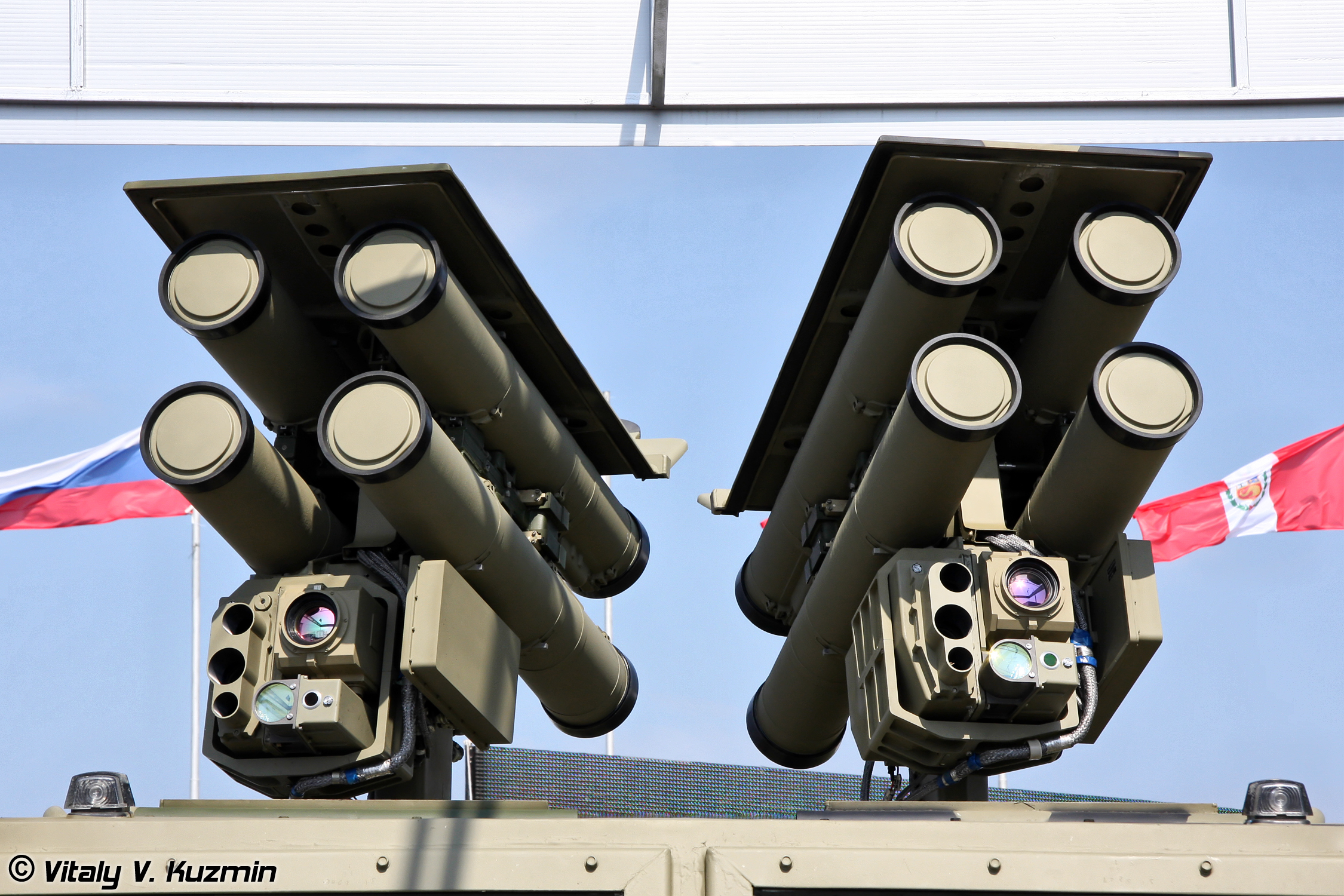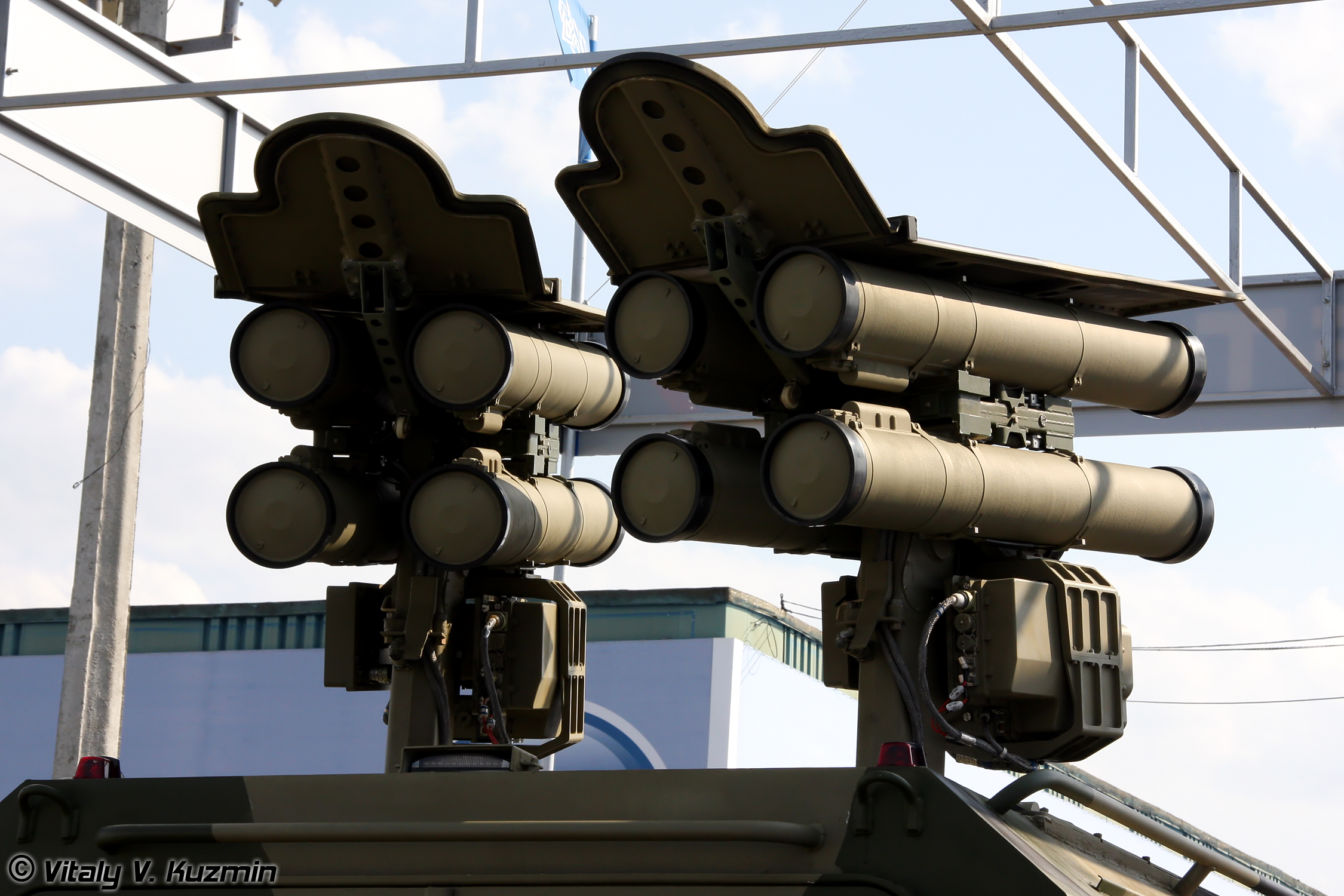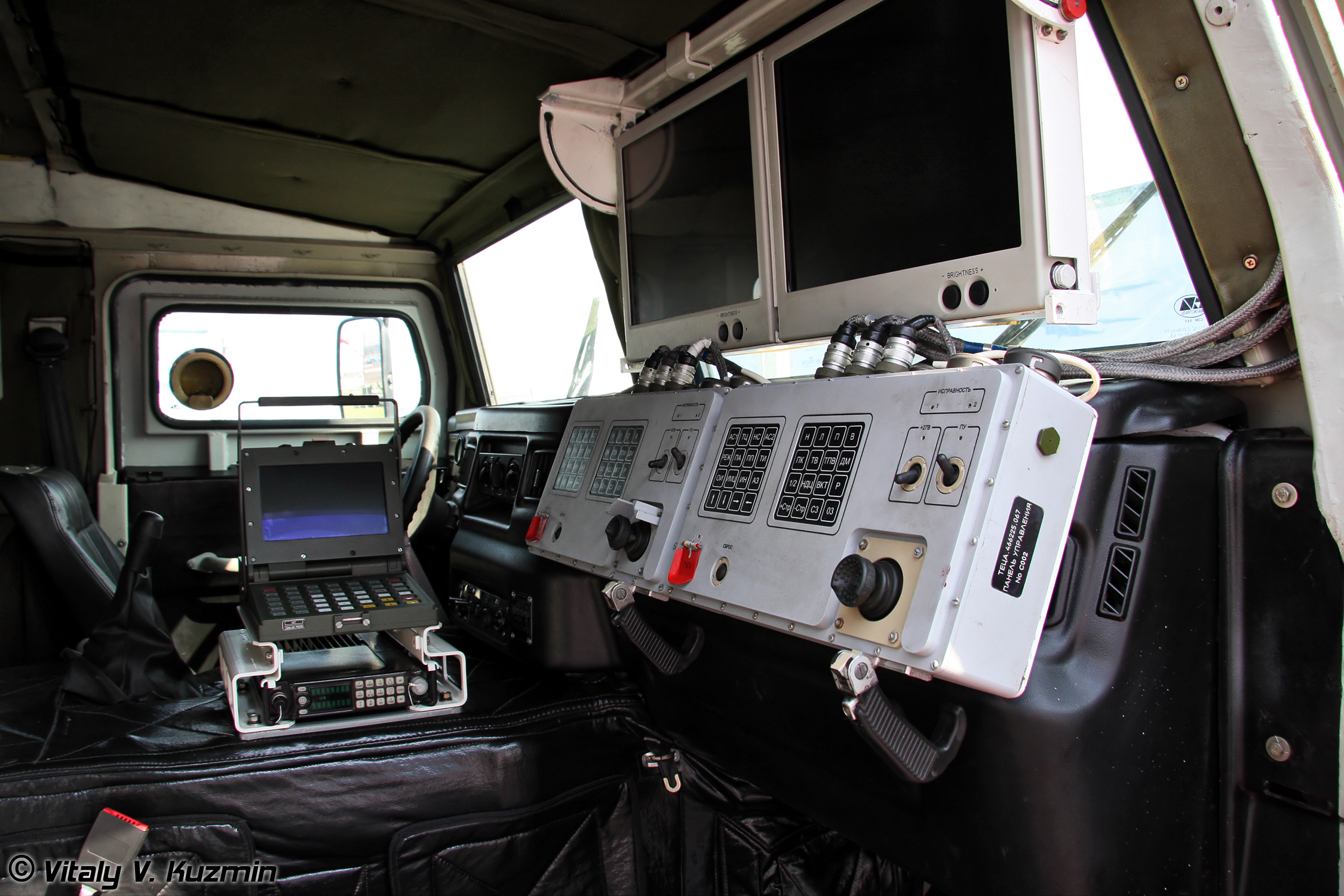Also of course shtora is generally set off by a laser, so neither Javelin or Spike would set it off.
It is getting to the point where tanks will need ESM suites like fighter aircraft...
 Re: Russian Army ATGM Thread
Re: Russian Army ATGM Thread Re: Russian Army ATGM Thread
Re: Russian Army ATGM Thread
 Re: Russian Army ATGM Thread
Re: Russian Army ATGM ThreadOf the many launches shown none seem to me to have the missile fly any great distance above the line of sight.
A weapon is only as good as the tactics employed.
If the Javelin is useless because its range is only 2.5km then Metis-M1 is also useless because its range is 2km. The RPG... whether it is 7 or 29 or a disposable 27 or 28 is not useless either.
Very simply unless the battlefield is a flat open and empty desert there will always be opportunities to attack enemy forces in conventional and unconventional situations.
Once the attacker has opened fire and revealed its position then it comes under attack, but in the case of Spike and Javelin they can leave as soon as they fire their weapons which minimises the risk they take.
The faster 9M133FM-3 is likely a dedicated surface to air version so the system would not be as dual use as say the Vikhr which has a switch to turn on a proximity fuse to allow use in an air to air role.
Agree. How is Shtora IR jammer effective against Javelin or Spike IIR homing heads? Could it blind them as IR locator in SACLOS ATGMs?
 Re: Russian Army ATGM Thread
Re: Russian Army ATGM ThreadAt 9:26 of the video that i had previously pointed out,you can clearly obserbe a fire sequence with a Kornet-E guided to a cruise line some meters above the LOS.
I repeat ,the "mistake" ,if so we can say, is in the naive mind of someone attempting to compare FGM-148 Javelin (a weapon in the same class of M-47 Dragon or Metis-M1) with a Kornet (a weapon in the same class of BGM-71 TOW or Euromissile HOT).
What i have pointed out is that,in a large scale conflict, attempting to employ FGM-148 in the same operative roles planned, by the same US Army ,for a BGM-71 TOW-2 (a weapon designed,from its start, to confront Soviets forces in an immense scale multifront ground offensive in the Great European Plain and which remain,at today, the main anti-tank weapon of actual Brigade combat team's anti-tank segment of US Army) would lead to outcomes simply disastrous ; "tactics" have simply zero to do with that .
Sure, but one more time,only if we talk of weapons in the same class of FGM-148 and in tactical situations and ranges where the employement of a missile in the class of "Javelin" offer any advantage against systems dozen of times cheapers and easy to carry around.
In fact,also if we restrict the field to all russian-built weapons, if the type of target, tactical situation and range involved allow the engagement of your intended targets with Metis-M1 or,even better,RPG-29 or Shmel-M (enjoying a natural "fire and forget" nature and total immunity to soft kill countermeasures),try to employ a Kornet is not only a solution totally wrong but even counterproductive.
9M133FM-3 could engage pratically any target except maybe the most armoured (for which the 8 Km capable missile with shaped charge warhead and 1100-1300 mm RHA of penetrative power will be purposely employed).
That likely mean that 9М133FM missile will constitute a minority percentual of Kornet-EM's missile mix ,to use only against specific very strongly armoured targets
 Re: Russian Army ATGM Thread
Re: Russian Army ATGM Thread Re: Russian Army ATGM Thread
Re: Russian Army ATGM Thread Re: Russian Army ATGM Thread
Re: Russian Army ATGM Thread Re: Russian Army ATGM Thread
Re: Russian Army ATGM Thread Re: Russian Army ATGM Thread
Re: Russian Army ATGM ThreadNationalRus wrote:well a mounted vesrion is not bad after what 16 years? now....
 Re: Russian Army ATGM Thread
Re: Russian Army ATGM Thread Re: Russian Army ATGM Thread
Re: Russian Army ATGM ThreadFor the version of the complex " Kornet", intended for the Russian army has TPV sight 1PN80" Cornet-TS ", which allows you to fire not only at night, but the use in conditions of enemy combat smoke. Target detection range for a tank-type target is 5000 meters. Target recognition at 3500 m.
http://www.btvt.narod.ru/4/kornet.htm
 Re: Russian Army ATGM Thread
Re: Russian Army ATGM Thread Re: Russian Army ATGM Thread
Re: Russian Army ATGM ThreadCyberspec wrote:NationalRus wrote:well a mounted vesrion is not bad after what 16 years? now....
Assuming you actually watched the video you'd realise it's a bit more than just a 'mounted' version...it doesn't take rocket science to put a ATGW on a jeep.
 Re: Russian Army ATGM Thread
Re: Russian Army ATGM ThreadNationalRus wrote:Cyberspec wrote:NationalRus wrote:well a mounted vesrion is not bad after what 16 years? now....
Assuming you actually watched the video you'd realise it's a bit more than just a 'mounted' version...it doesn't take rocket science to put a ATGW on a jeep.
im talking about Fire and Forget ATGMS
and we still don't realy have one, now a prototype, limited use and testing... wow its been how long... the first FGM-148 was build in 1989
Experts at Tula KBP, despite the fact that successfully completed work on guided missiles which implements the principle of "fire and forget", refused to implement it, in the complex "Cornet". They believe that the ATGM "Cornet" compares favorably with their foreign counterparts.
First of all, it used the principle of "see-shoot" and laser-beam control system, which has resulted in greater maximum range, in contrast to the Western concept of building a long-range anti-tank systems on a "shot - forget", in which anti-tank equipped with a passive homing (GOS) on matrices of charge-coupled devices. The foreign concept has remained unsold fully for several reasons.
For example, the resolution of thermal imaging sight, placed on a mobile carrier, much higher than that of the GOS, so the problem of aquiring the target with GOS to begin with remains technically unsolved. The firing on targets without significant contrast in the far- infrared wavelengths (bunkers, pillboxes, machine gun nests and other engineering structures), impossible, especially in conditions passive optical interference. There are certain problems of scaling the target image to GSN during the missile approach .
The cost of such a missile in 5 - 7 times higher than the corresponding values for anti-tank complex "Cornet".
ATGM "Cornet" is characterized by:
- Simplicity of use - does not require highly qualified personnel.
- Versatility of application, defeats all the targets outside the range of effective return fire of the enemy;
- The laser emission coding allows adjacent systems to deliver crisscross fire at different targets or at one target simultaneously
- high precision combat application, including in adverse weather.
- The possibility of combat application in conditions of electronic and optical noise (for example, provides protection from the effects of "Shtora-1" (Russia), Pomals Piano Violin Mk . L (Israel), in contrast to second-generation anti-tank systems TOW , Milan -2 T , Hot -2 T , "Konkurs" etc., which in these conditions, sharply reduced efficiency due to inoperable direction-finding channels of the missiles);
- Block-modular principle of construction of IP, its low mass and size, versatility of attachment points, making it possible to place it on various vehicles, including jeeps.
http://www.btvt.narod.ru/4/kornet.htm
 Re: Russian Army ATGM Thread
Re: Russian Army ATGM Thread Re: Russian Army ATGM Thread
Re: Russian Army ATGM Threadnightcrawler wrote:@ 7:41
https://www.youtube.com/watch?v=n5MvPYHDNlc
what is this device called & is it against radio guided ATGMs
@ http://en.rian.ru/video/20110822/166046562.html
They are mistakenly calling it fire-forget...like the not yet developed Hermes
I require other view upon the western claims that Kornet pompous range of 8km(as compared to western ATGMs <5km) is not practical in infantry roles during the battlefield
 Re: Russian Army ATGM Thread
Re: Russian Army ATGM Threadwhat is this device called & is it against radio guided ATGMs
They are mistakenly calling it fire-forget...like the not yet developed Hermes
I require other view upon the western claims that Kornet pompous range of 8km(as compared to western ATGMs <5km) is not practical in infantry roles during the battlefield
It's not suited for close range fighting. That's what the Rpg's are for

 Re: Russian Army ATGM Thread
Re: Russian Army ATGM Thread@ http://en.rian.ru/video/20110822/166046562.html
They are mistakenly calling it fire-forget...like the not yet developed Hermes
I require other view upon the western claims that Kornet pompous range of 8km(as compared to western ATGMs <5km) is not practical in infantry roles during the battlefield
Ah Ah Ah !!!! What legendary ignorant !!! Laser ,or Light Amplification by Stimulated Emission of Radiation , is nothing more than a coherent radiation in a specific wavelenght segment of electromagnetic spectrum, nothing less nothing more; therefore target surface irradiation by part of a laser beam ,like a laser range finder do, is not only obviously existing but is even the only correct physical definition of the phenomenon in question !!! Incredible ,and this authenticate decerebrated toad got also the face to belittle its interlocutor" Laser that does not irradiate.You are really genius "
"Kornet missiles weights 29 kg, Spike ER - 13 kg. See the difference? Or u still believe they are same class??"
- Let me clarify for u:
2) Spike ER is in same class with Kornet and Kornet-D. Spike again is clearly superior here.
 Re: Russian Army ATGM Thread
Re: Russian Army ATGM ThreadDevelopment of short range anti-tank system with autonomous control system "Autonomy"
complex "Autonomy" combines the best features of RPG anti-tank grenades - simple construction, high jamming immunity, the implementation of the principle of "fire and forget" and guided anti-tank systems - high probability of hitting, powerful warhead .
The system enables the a defeat tanks as a direct hit, and from the top (overflying target) through the use of the warhead. The missile control system has a autopilot angular stabilization with high gas-jet rudders, interacting with a supersonic stream Ragon engine.
Specifications:
-Range - 350 m (both versions)
Warhead weight:
- "standard" version (version 1) - tandem shaped-charge - 5.2 kg
- "top-attack" version (version 2) - 8,5 kg
- explosive-fragmentation warhead - 8.5 kg
weight of rocket
- version 1 - 10 kg
- version 2 - 15 kg
Length of rocket
- version 1 - 1000 mm
- version 2 - 1250 mm
Weight of the complex in the firing position
- option 1 - 14.5 kg
- option 2 - 19.5 kg
Developer – TSNIITOCHMASH
 Re: Russian Army ATGM Thread
Re: Russian Army ATGM Thread
 Re: Russian Army ATGM Thread
Re: Russian Army ATGM ThreadNEW CAPABILITIES OF ATGM SYSTEMS
Military Parade, No. 4, 2011
Author: Igor Stepanichev, Arkady Shipunov, Lev Zakharov
Igor Stepanichev - Acting Director General of KBP Instrument Design Bureau
Arkady Shipunov - First Deputy General Director - Head of Research
Lev Zakharov - Chief designer in charge of subject area
Antitank guided missile (ATGM) systems have been developed and manufactured around the world for more than half a century. Over this time they have become the most popular and in-demand type of precision guided weapons, due to their ease of use and relatively low cost.
Nowadays, ATGM systems are effectively used not only to destroy tanks, but also to engage a wide range of other small targets: enemy lightly armored and soft-skin vehicles, various fortifications, manpower, and infrastructure elements.
The third-generation Kornet-E system featuring a laser-beam riding guidance system, developed by the KBP Instrument Design Bureau and adopted in 1998, was the first ATGM system offering complete ECM immunity and the capability of firing from mobile carriers (platforms). Currently, the Kornet-E ATGM system with a firing range of 5,500 m is the most advanced model of a multipurpose close assault weapon. Its missile load includes missiles with a tandem HEAT warhead designed primarily to engage heavily protected targets (tanks, bunkers, etc.) and missiles with HE warheads intended to defeat a wide spectrum of targets posing a threat on the battlefield.
A future ATGM system must be a versatile defensive/assault guided weapon capable of handling a wide range of missions in the close-in zone under various combat conditions, moreover available both in portable and vehicular versions.
At MAKS 2011 International Aviation and Space Salon, KBP will exhibit its in-house developed Kornet-EM multipurpose missile system meeting the current requirements for a future ATGM system, owing to the use of advanced engineering solutions which have given it a number of new qualities.
The use of machine vision with a target autotracker removes the human from the ATGM guidance process, thus actually implementing the "fire and forget" concept, without using expensive seekers in the missile. At the same time the target tracking accuracy under real combat conditions increases up to 5 times and a high hit probability is achieved throughout the entire range envelope of the ATGM system, which is twice the range of the Kornet-E.
The capability to engage targets in automatic mode reduces the psychophysical load of operators, mitigates requirements for their qualifications, and at the same time cuts their training time.
The modular design concept traditional for the Kornet family allows the installation of one or two automatic missile launchers on a wide range of relatively inexpensive small vehicles of various origin (the weight of one-and two-launcher versions of the weapon system together with missile load is 0.8 and 1.2 tons, respectively) with a remote control option.
Basic specifications of the Kornet-EM system
Firing range -- 50 - 10,000 m
Guidance system -- automatic, laser beam riding guidance
Jamming immunity -- high
Number of targets engaged simultaneously by a savo -- 2
Armor penetration of HEAT warhead -- 1100-1300 mm
TNT equivalent of HE warhead -- 7 kg
Missile load -- 16 pcs
including ready-to-fire missiles -- 8
The proposed variant of a combat vehicle with two launchers provides salvo firing against two targets, thus significantly increasing the rate of fire and firing capabilities of the ATGM system. Like the Kornet-E, the Kornet-EM has retained the capability for salvo firing of two missiles in one beam against one target to penetrate active protection systems.
Increase in firing range up to 10 km and hit accuracy, the implementation of auto-tracking making it possible to track not only slow ground targets, but also higher-speed objects, have made the Kornet-EM capable of accomplishing a mission that is essentially new for the ATGM system - engagement of small aerial targets (helicopters, UAVs and attacking ground-attack aircraft).
The effectiveness of the Kornet-EM system against aerial targets is achieved through a combination of a precision automatic guidance system and a guided missile with a thermobaric warhead equipped with impact and proximity target sensors (ITS and PTS).
The proximity sensor guarantees reliable engagement of an aerial target at all firing ranges. Combined with a powerful HE warhead, the PTS compensates possible misses through effective destruction of an UAV or a helicopter by overpressure.
The maximum firing range of 10 km range gives the ATGM system an advantage when engaging helicopters - this makes it possible to fire at ranges exceeding the range of enemy weapons.
The Kornet-EM system includes:
- combat vehicle with two automatic launchers and operator's panel with a display;
- automatic launcher carrying four ready-to-fire guided missiles and fitted with a TV/thermal imaging sight incorporating high-resolution TV cameras and a 3rd Gen. thermal imager, a built-in laser rangefinder and a laser missile guidance channel as well as an automatic target tracker with laying servos;
- guided missile with a HE warhead with impact and proximity sensors having the firing range of up to 10 km;
- anti-tank guided missile with a maximum range of up to 8 km and a HEAT warhead with armor penetration of 1100 to 1300 mm, which gives the Kornet-EM the capability of defeating current and future tanks, given the tendency to growth in their armor protection.
The Kornet-EM missiles can be used for firing from a 9P163M-2 portable launcher with an optical channel of variable power (12x and 20x) equipped with a 3rd Gen thermal sight.
Comparative performance analysis of the Kornet-EM system and its foreign counterparts suggests that the former is superior to fire-and-forget systems 3 to 5 times in terms of combat efficiency when accomplishing missions traditional for ATGM systems, being at the same time simpler in use and maintenance and employing 3 to 4 times cheaper missiles, which are an expendable component of the system and largely determine its operating costs in troops.
At MAKS 2011 International Aviation and Space Salon, KBP will exhibit its in-house developed Kornet-EM multipurpose missile system meeting the current requirements for a future ATGM system, owing to the use of advanced engineering solutions which have given it a number of new qualities.
Flight range -- 150 - 10,000 m
TNT equivalent -- 7 kg
Target sensor -- impact and proximity
Max flight speed -- 320 m/s
Weight with the container -- 33 kg
Container length -- 1210 mm
Flight range -- 150 - 8,000 m
Armor penetration -- 1100 - 1300 mm
Max speed -- 300 m/s
Weight (with the container) -- 31 kg
Container length -- 1210 mm
 Re: Russian Army ATGM Thread
Re: Russian Army ATGM Thread Re: Russian Army ATGM Thread
Re: Russian Army ATGM Thread



 Re: Russian Army ATGM Thread
Re: Russian Army ATGM Thread Re: Russian Army ATGM Thread
Re: Russian Army ATGM Thread